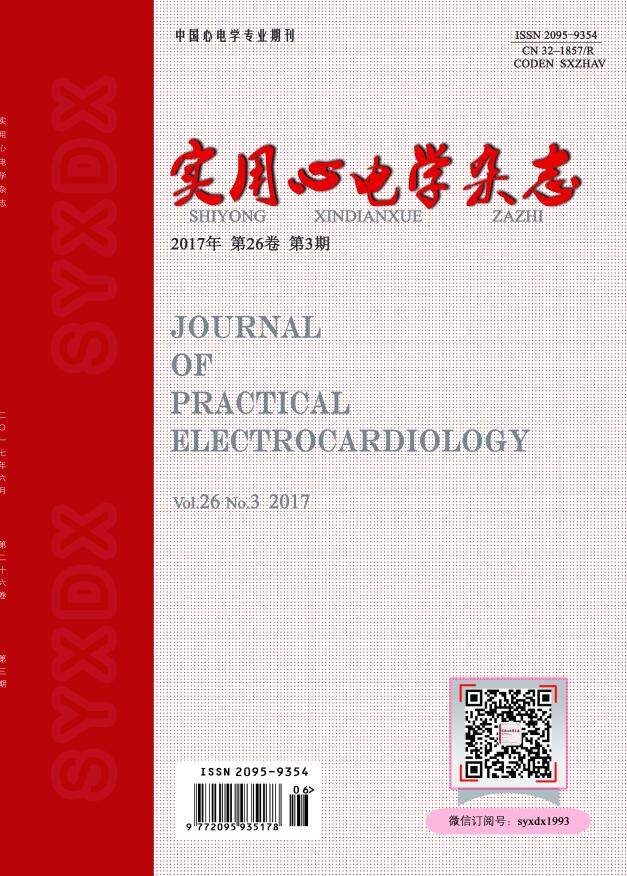● Article
SUN Dong-Ming, ZHANG Yong, WANG Rui-Geng, JIANG Xiao-Mei
Objective To analyze the changes and clinical significance of T peakT end interval(Tp-Te), corrected Tp-Te(Tp-Tec), the ratio of Tp-Te and QT interval(Tp-Te/QT), and other myocardial repolarization indexes in children with noncompaction of ventricular myocardium(NVM). Methods Thirty-four hospitalized children with NVM were enrolled in our study as NVM group while another 34 healthy children were randomly selected as the control group. We compared the heart rate measured from 12 lead surface electrocardiogram, corrected QT interval(QTc), Tp-Te, Tp-Tec, Tp-Te/QT and other indexes between the two groups. Results Five(14.7%) out of the 34 NVM children were complicated by ventricular arrhythmia(4 cases of premature ventricular contraction and one case of ventricular tachycardia). The heart rate of children in NVM group was significantly higher than those in the control group, with statistically significant difference[(128.8±21.8) times/min vs. (113.1±17.5) times/min, P<0.05]. There was no significant difference in either QTc or TpTe between the two groups[(404.8±30.9) ms vs. (402.6±21.4) ms, (76.1±17.3) ms vs. (72.1±13.9) ms, P>0.05]. In NVM group, Tp-Tec was prolonged and Tp-Te/QT increased significantly if compared with those indexes in the control group, with statistically significant differences[(112.7±26.8) ms vs. (98.6±16.6) ms, (0.27±0.06) vs. (0.23±0.04), P<0.05]. Conclusion The abnormalities of transmural dispersion of repolarization in children with NVM easily lead to the occurrence of ventricular arrhythmia. Because of the influence of heart rate and other factors, the predictive value of Tp-Tec and Tp-Te/QT on ventricular arrhythmia in children with NVM is higher than that of Tp-Te.
